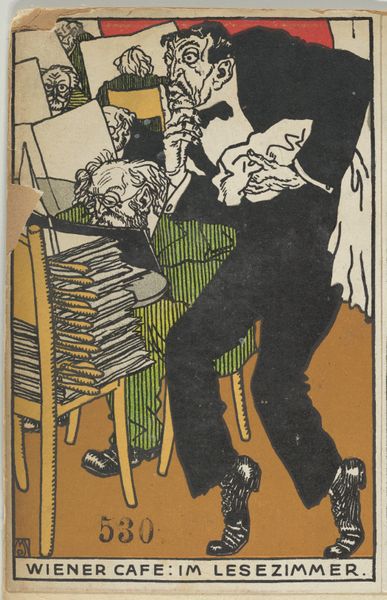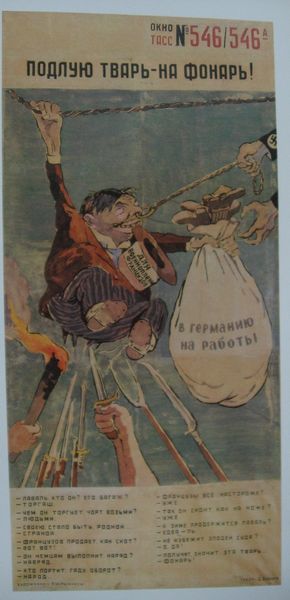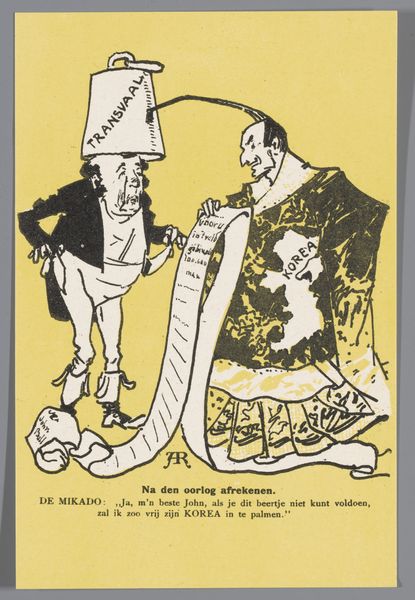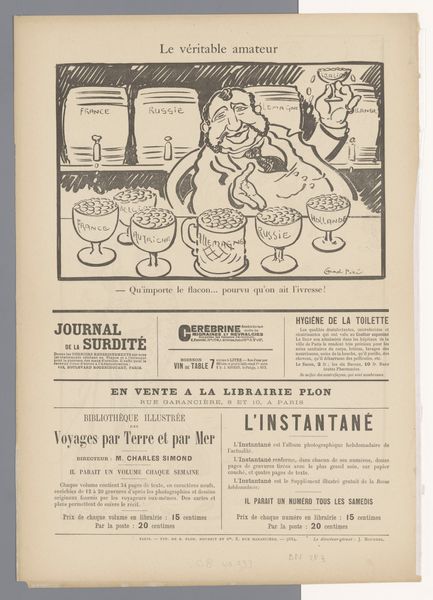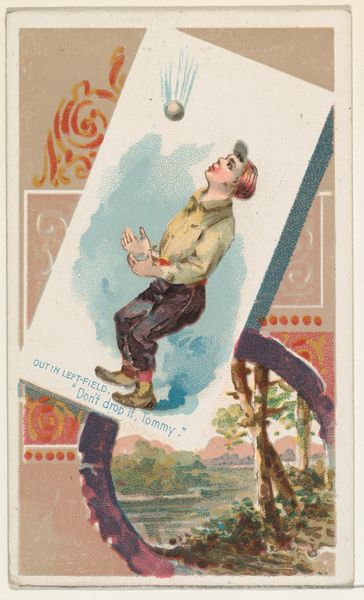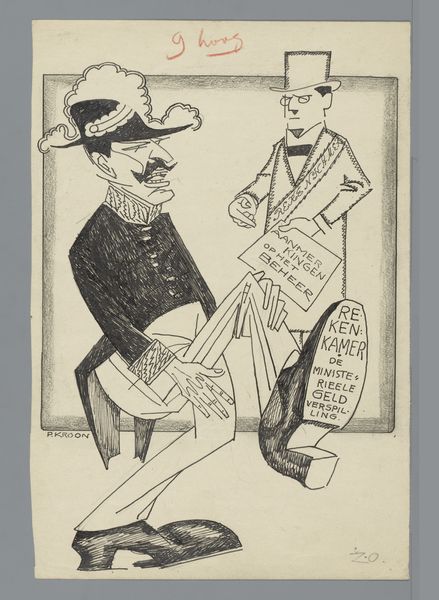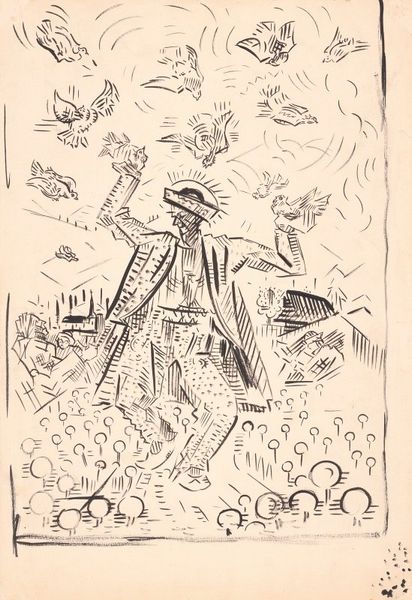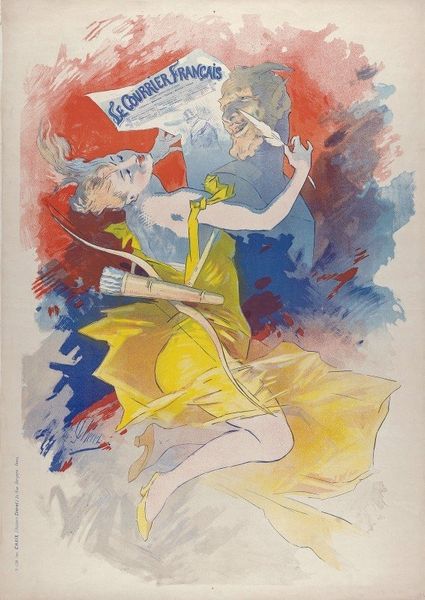
graphic-art, print, typography, poster
#
art-deco
#
graphic-art
#
two-coloured
#
reduced colours
# print
#
traditional media
#
hand drawn type
#
personal journal design
#
figuration
#
personal sketchbook
#
typography
#
children publication design
#
publication mockup
#
storyboard and sketchbook work
#
poster
#
modernism
#
publication design
Dimensions: height 16.5 cm, width 11.3 cm
Copyright: Rijks Museum: Open Domain
Editor: This print, titled "6 September 1938," was created in 1938 by Henk Doornekamp. It feels festive but also slightly… cautionary? The blue figure in a party hat seems to be celebrating something, but the text hints at a deeper message. What symbols stand out to you in this work? Curator: The figure's pointed hat and the horn he's playing immediately conjure images of revelry, linking to the symbolism of celebration that dates back to ancient rituals. Yet, consider the date itself: 1938. The festive image juxtaposed against the historical backdrop—the looming shadow of WWII—creates a powerful tension. Doesn't it make you question the true nature of this “party”? Editor: It does, especially with the text advocating against alcohol. So, the "festivities" are ironic? Curator: Precisely. Alcohol, traditionally a symbol of social bonding and celebration, is presented here as a deceptive pleasure. The Netherlands Society for the Abolition of Alcoholic Beverages likely aimed to expose the darker side of such celebrations, alluding to dependence and perhaps national vulnerability during that volatile time. Does this context change your perspective on the visual elements? Editor: Absolutely! Now, the whole composition reads as a warning rather than an invitation to celebrate. Even the colors, limited to only blue and peach, now seem to convey the sentiment and meaning of sobriety! Curator: Indeed! That limitation is powerful, guiding our eyes, emotions, and cognitive memory toward interpreting the social complexities. Images contain layered meanings, shifting based on culture and era. The role of an iconographer, psychologist, and historian. We learn to appreciate these visual cues with more historical background. Editor: It’s amazing how knowing the context transforms the entire message. Thanks, I learned how context matters.
Comments
No comments
Be the first to comment and join the conversation on the ultimate creative platform.

